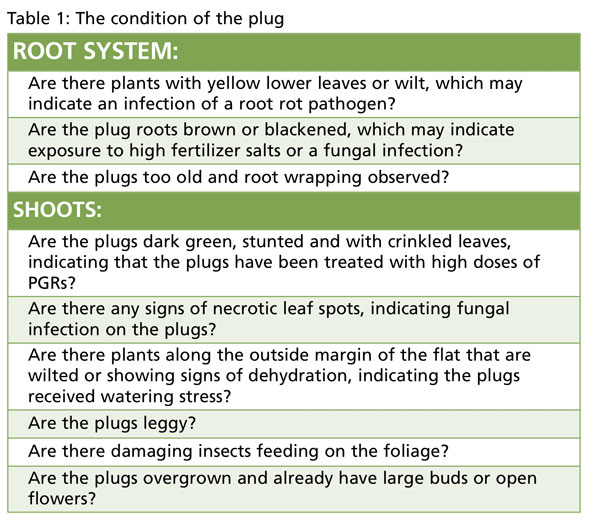1/1/2023
Pansy Transplant Establishment
Dr. Jamie Gibson

Every pansy grower strives for uniform growth while minimizing plant losses. One major source of pansy crop failure is the improper treatment of plugs upon transplant into the finishing tray.
In order to be successful, you must consider several factors in the establishment of pansies. These include pre-plant plug status, substrate preparation, irrigation, fertilization and nutritional monitoring, and substrate fungicide drenching. Addition-ally, growers can achieve even better results and enhance their overall bottom line by selecting pansy varieties with exceptional performance.
Plug status
When plugs are received from young plant suppliers, growers should always conduct a shoot-and-root survey of the product (see Table 1). These factors are very important to the success of plug establishment.
If any of these conditions are observed, growers should take immediate action with the plant supplier. Waiting weeks or months to inform the supplier of troubles makes it difficult to diagnose and remedy the issue. The No. 1 rule with plug establishment is to make sure plugs are in perfect health before transplanting. If disease is suspected, then immediately send samples to a diagnostic lab for testing. Starting with a quality plug will contribute to success during the finishing stage.
For all but the largest plug sizes, 28 to 35 days after sowing is typically the best time to transplant pansies to avoid root wrapping, which may prevent the plant from optimal branching and reaching its full genetic potential.
Root substrate & dibbling
Proper preparation of the finishing tray is another important aspect of pansy plug establishment. The pots should be filled with a good quality soilless substrate. Compaction of the substrate can result in delayed root development. The size of the dibble hole shouldn’t be deeper than the length of the root ball or wider than the root ball.
Initial irrigation
The first one to two weeks after transplant are critical to the success of a pansy crop. Environment stress (high heat, light and severe dry cycles) and improper water management are common causes of crop failure.
The substrate should be moist when transplanting a large amount of plugs during periods of hot weather. It’s strongly recommended that watering should be assigned to the best waterer of the business. Hand watering is an art in itself that must be practiced and perfected, especially when it comes to pansy production. Making a series of quick and uniform water applications is ideal for the initial irrigation.
Plug root ball size and foliage height play a major role in the decision of how to water pansy flats. For example, if one knows that a plug from a 384 tray will be buried by moderate watering, then gentle swaths should be made over the flats. The goal of the initial irrigation is to carefully irrigate the plugs so that the substrate around the plug firmly holds the small plant in place. This reduces the chances of the substrate covering the crown and foliage, which may ultimately lead to plug death.
Irrigation & fertilization during establishment
Pansy plugs should be irrigated with clear water if the substrate conditions are on the dry side. If the substrate is moist, a moderate rate of nitrogen (50 to 100 ppm N) can be applied to boost the plugs. Pansy plugs should never experience water stress in the finishing tray.
After the initial watering, the growing substrate should be fully moistened. Growers have found the best time to begin a constant liquid fertilization program is after some root development is observed penetrating into the surrounding substrate.
For uniform expansion of the growing shoots and roots, a moderate fertilization of N should be administered. Applications of a CalMag formulation at 150 to 200 ppm of nitrogen are recommended. Weekly monitoring of soluble salts and pH should be conducted for proper pansy establishment. GT
Dr. Jamie Gibson is with Syngenta Technical Services. For additional tech tips, visit syngentaflowers-us.com.